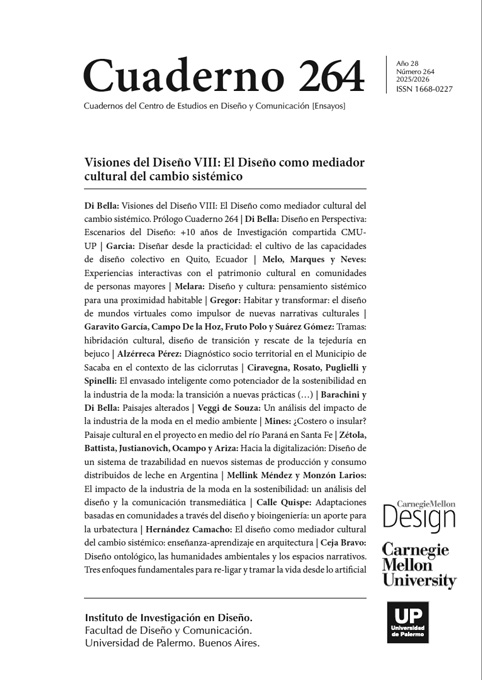Diseño ontológico, las humanidades ambientales y los espacios narrativos. Tres enfoques fundamentales para re-ligar y tramar la vida
Abstract
The type of relationships that we establish with what is configured if it is reduced to the material, to the form, to its consumption, multiple underlying implications will be denied, so any other value and meaning that is deeply rooted in social praxis will be found on a plane of immanence (Greimas, 1987).
References
Albelda, J., Parreño, J., Henríquez y Marrero, J. (2018). (coord.) Humanidades ambientales. Pensamiento, arte y relatos para el siglo de la gran prueba, España: Ed. Cantara.
Auster, P. (2006). Pista de despegue. Poemas y ensayos 1970-1979, Barcelona: Ed. Anagrama.
Austin, P. (2018). Some Distintive Features of Narrative Enviroments. Interiority, 1 (2), pp. 153-172, 2018,
Austin, P. (2015). Give and Take. Spaces as Medium of communication, Cultures of Resilience, London: Ed. University of the Arts London.
Beuchot, M. (2016). Hechos e interpretaciones. Hacia una hermenéutica analógica, México: Ed. FCE.
Bennett, J. (2022). Materia vibrante. Una ecología política de las cosas, Buenos Aires, Argentina: Ed. Caja Negra.
Los autores/as que publiquen en esta revista ceden los derechos de autor y de publicación a "Cuadernos del Centro de Estudios de Diseño y Comunicación", Aceptando el registro de su trabajo bajo una licencia de atribución de Creative Commons, que permite a terceros utilizar lo publicado siempre que de el crédito pertinente a los autores y a esta revista.


